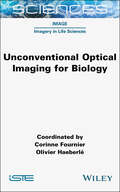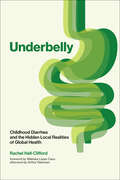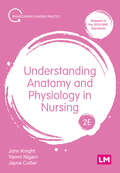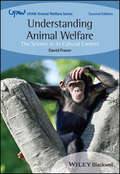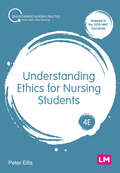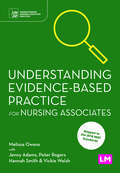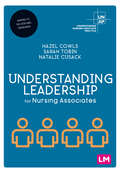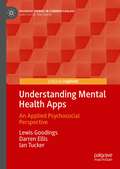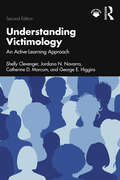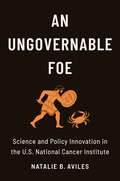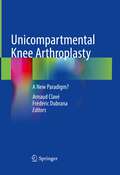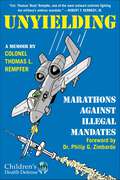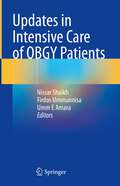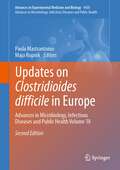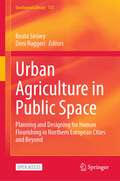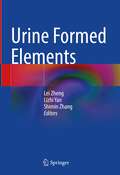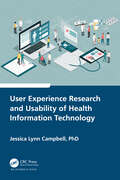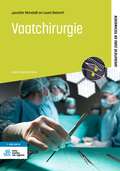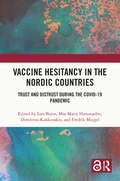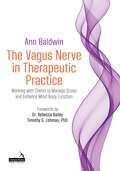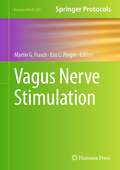- Table View
- List View
Unconventional Optical Imaging for Biology
by Corinne Fournier Olivier HaeberléOptical imaging of biological systems has undergone spectacular development in recent years, producing a quantity and a quality of information that, just twenty years ago, could only be dreamed of by physicists, biologists and physicians. Unconventional imaging systems provide access to physical quantities – phase, absorption, optical index, the polarization property of a wave or the chemical composition of an object – not accessible to conventional measurement systems. To achieve this, these systems use special optical setups and specific digital image processing to reconstruct physical quantities. This field is also known as computational imaging. This book presents various non-conventional imaging modalities developed for the biomedical field: wave front analysis imaging, digital holography/tomography, optical nanoscopy, endoscopy and singlesensor imaging. Experimental setups and reconstruction algorithms are presented for each modality.
Underbelly: Childhood Diarrhea and the Hidden Local Realities of Global Health
by Rachel Hall-CliffordAn unsettling exploration of the hidden power dynamics of global health, seen through the lens of childhood diarrhea and its treatment within the Guatemalan context.Deaths from childhood diarrhea seem preposterous in high-income countries. Yet, for children under five years old in the rest of the world, diarrhea is the third highest cause of mortality. Despite a glut of prevention and treatment programming spanning more than forty years, this least glamorous of global health ills remains a critical problem. In Underbelly, Rachel Hall-Clifford takes a hard look at the pathways of global health funding and development policies and the outcomes they deliver for recipient individuals and communities. Drawing on fifteen years of ethnographic research in highland Guatemala, Hall-Clifford focuses on the provision of primary health care services as a critical exemplar of how global health and development programs fall short.Guatemala has a fragmented health system, the author explains, that guarantees health as a human right but also suffers from systemic racism, inadequate health services and access to those services, community distrust from a legacy of harm and violence, and a demeaning paternalism. Bringing together the discourses of global health and medical anthropology, Underbelly explores the ways in which global health—its actors, structures, and systems—perpetuates the challenges it purports to fix: this is the underbelly. Hall-Clifford argues that global health programs, conceived in offices distant from the places in which they are delivered, often have unintended consequences and contribute to pluralistic and exclusionary health systems that mirror neoliberal economies. She argues that if we are to fix this entrenched crisis of health inequity, we must use the immense resources of global health to center local communities as drivers of change.With a foreword written by Waleska López Canu, an Indigenous Maya medical director, and an afterword by Arthur Kleinman, renowned expert in global health, this book underscores the importance of looking deeper into what seems on its surface incontrovertibly &“good&” to understand the more complex realities on the ground and in people&’s lives.
Understanding Anatomy and Physiology in Nursing (Transforming Nursing Practice Series)
by John Knight Yamni Nigam Jayne CutterCovering all the key aspects of anatomy and physiology that nursing students need to know, this second edition condenses vast amounts of scientific information into short, concise, and easily accessible chapters. It introduces aspiring nurses to all of the vital information on this tricky subject, from an overview of cells, blood, and the major organ systems through to key developmental stages, genetics and ageing. Case studies link core principles of anatomy and physiology to common real-world clinical scenarios, helping students apply this knowledge to their everyday working practice. Key features: - Each short chapter is mapped to the 2018 NMC Standards - Scientific information is broken down into easily digestible chunks with accompanying illustrations, to help aspiring nurses get to grips with this complex subject - Case studies, activities and other learning features help students translate the theory to practice - Provides revision guidance and strategies for tackling exams and assessments
Understanding Anatomy and Physiology in Nursing (Transforming Nursing Practice Series)
by John Knight Yamni Nigam Jayne CutterCovering all the key aspects of anatomy and physiology that nursing students need to know, this second edition condenses vast amounts of scientific information into short, concise, and easily accessible chapters. It introduces aspiring nurses to all of the vital information on this tricky subject, from an overview of cells, blood, and the major organ systems through to key developmental stages, genetics and ageing. Case studies link core principles of anatomy and physiology to common real-world clinical scenarios, helping students apply this knowledge to their everyday working practice. Key features: - Each short chapter is mapped to the 2018 NMC Standards - Scientific information is broken down into easily digestible chunks with accompanying illustrations, to help aspiring nurses get to grips with this complex subject - Case studies, activities and other learning features help students translate the theory to practice - Provides revision guidance and strategies for tackling exams and assessments
Understanding Animal Welfare: The Science in its Cultural Context (UFAW Animal Welfare)
by David FraserUnderstanding Animal Welfare The essential text on understanding and improving animal welfare Understanding Animal Welfare, 2nd Edition is revised and expanded to incorporate new research and developments in animal welfare. Updated with greater accessibility in mind, the reader is guided through animal welfare in its cultural and historical context, methods of study, and applications in practice and policy. Drawing examples from farm, companion, laboratory and zoo animals, the text provides an up-to-date overview of research and its applications, while also tracing how concepts and methods have evolved over time. Readers of the second edition of Understanding Animal Welfare will also find: New developments in understanding positive animal states The importance of human actions in determining animal welfare New content on “One Welfare” How free-living wild animals are affected by human technology and climate change Originally intended for scientists and professionals, Understanding Animal Welfare has also found a home in undergraduate classrooms. It is now the essential text for students, practitioners, veterinarians, and researchers in animal welfare and related fields.
Understanding Ethics for Nursing Students (Transforming Nursing Practice Series)
by Peter EllisEthics have an significant impact on the decisions nurses make in their day-to-day work, so it’s important for all student nurses to develop their understanding of ethical frameworks as preparation for future practice. In this book, the author explains ethical ideas, theories and concepts in simple to understand terms, focussing on real-life nursing situations in order to make applying these principles to practice easy. This book will make student nurses consider their own values, and how ethics fit into who they are and how they behave, helping them to unlock this interesting and complex subject. Key features: Fully mapped to the NMC Future Nurse standards of proficiency (2018) A practical guide that explores how ethics applies to nursing and shows you how the theory fits in to the realities of practice Contains real work case studies with an emphasis on ethical decision making Activities challenge students to reflect on their own values, experiences and prejudices and to think about how ethics fits in with who they are and how they behave
Understanding Ethics for Nursing Students (Transforming Nursing Practice Series)
by Peter EllisEthics have an significant impact on the decisions nurses make in their day-to-day work, so it’s important for all student nurses to develop their understanding of ethical frameworks as preparation for future practice. In this book, the author explains ethical ideas, theories and concepts in simple to understand terms, focussing on real-life nursing situations in order to make applying these principles to practice easy. This book will make student nurses consider their own values, and how ethics fit into who they are and how they behave, helping them to unlock this interesting and complex subject. Key features: Fully mapped to the NMC Future Nurse standards of proficiency (2018) A practical guide that explores how ethics applies to nursing and shows you how the theory fits in to the realities of practice Contains real work case studies with an emphasis on ethical decision making Activities challenge students to reflect on their own values, experiences and prejudices and to think about how ethics fits in with who they are and how they behave
Understanding Evidence-Based Practice for Nursing Associates (Understanding Nursing Associate Practice)
by Melissa Owens Jenny Adams Peter Rogers Hannah Smith Vickie WelshProviding evidence-based care is fundamental to working safely and effectively as a nursing associate. This book equips you with the skills to identify, evaluate and apply evidence and research to your practice. From day-to-day procedures and decision-making, to addressing health inequalities and implementing service improvement, it develops your confidence in using evidence to underpin all aspects of your role. Key features - Fully mapped to the NMC Standards of Proficiency for Nursing Associates (2018) - Explains the principles of evidence-based practice in clear, straightforward language - Case studies and activities illustrate evidence-based practice across a range of different patient groups and care settings - Written specifically to address the unique experiences, challenges and requirements of the nursing associate role
Understanding Evidence-Based Practice for Nursing Associates (Understanding Nursing Associate Practice)
by Melissa Owens Jenny Adams Peter Rogers Hannah Smith Vickie WelshProviding evidence-based care is fundamental to working safely and effectively as a nursing associate. This book equips you with the skills to identify, evaluate and apply evidence and research to your practice. From day-to-day procedures and decision-making, to addressing health inequalities and implementing service improvement, it develops your confidence in using evidence to underpin all aspects of your role. Key features - Fully mapped to the NMC Standards of Proficiency for Nursing Associates (2018) - Explains the principles of evidence-based practice in clear, straightforward language - Case studies and activities illustrate evidence-based practice across a range of different patient groups and care settings - Written specifically to address the unique experiences, challenges and requirements of the nursing associate role
Understanding Leadership for Nursing Associates (Understanding Nursing Associate Practice)
by Hazel Cowls Sarah Tobin Natalie CusackDemonstrating leadership is entwined with many aspects of the nursing associate role. It is found in your workload management, prioritisation and delegation. It is found in the way you contribute to your team and supervise others. It is found in the way you deliver care and implement quality improvement. In short, understanding leadership is key to your future career. This book offers a first step into the world of leadership. Introducing the theory and principles of leadership you need to know, it shows you how to apply them to your every day role and build confidence in yourself as a leader. Key features - Fully mapped to the NMC Standards of Proficiency for Nursing Associates (2018) - Explains the theory and principles of leadership in clear, straightforward language - Case studies and activities illustrate leadership across a range of scenarios and care settings - Written specifically to address the unique experiences, challenges and requirements of the nursing associate role
Understanding Leadership for Nursing Associates (Understanding Nursing Associate Practice)
by Hazel Cowls Sarah Tobin Natalie CusackDemonstrating leadership is entwined with many aspects of the nursing associate role. It is found in your workload management, prioritisation and delegation. It is found in the way you contribute to your team and supervise others. It is found in the way you deliver care and implement quality improvement. In short, understanding leadership is key to your future career. This book offers a first step into the world of leadership. Introducing the theory and principles of leadership you need to know, it shows you how to apply them to your every day role and build confidence in yourself as a leader. Key features - Fully mapped to the NMC Standards of Proficiency for Nursing Associates (2018) - Explains the theory and principles of leadership in clear, straightforward language - Case studies and activities illustrate leadership across a range of scenarios and care settings - Written specifically to address the unique experiences, challenges and requirements of the nursing associate role
Understanding Mental Health Apps: An Applied Psychosocial Perspective (Palgrave Studies in Cyberpsychology)
by Lewis Goodings Darren Ellis Ian TuckerThis is the first book to look exclusively from at the use of MHapps from an applied psychosocial perspective. Much of the academic literature on MHapps in psychology focuses on the clinical efficacy of using apps (e.g., depression reduction as result of using a certain app) and will typically report on the use of randomised controlled trials (or a similar method) to illustrate the use of apps as a tool for improving a psychological condition. Therefore, the main benefit of this book is that it recognises the impact of apps from a social perspective and will aim to show how everyday forms of distress are embedded in the use of these apps and the broader set of relations that constitute people’s everyday lives. The content of this book will identify how an applied social perspective can offer insight into the power of apps to shape our sense of ourselves and of others. This book will be of use to educators and students in psychology, sociology, health studies, media studies andcultural studies.
Understanding Victimology: An Active-Learning Approach
by Shelly Clevenger Jordana N. Navarro Catherine D. Marcum George E. HigginsUnderstanding Victimology: An Active Learning Approach is the only textbook with extensive discussion of both online and offline victimization reinforced by group and individual learning activities. Our textbook offers instructors a variety of active learning exercises – in the book itself and in the authors’ ancillaries – that engage students in the material and shed light on the experiences of marginalized social groups. Through these activities, students become engaged with the material at a higher level of learning. They learn how victimization happens and the challenges people who experience crime face in acquiring assistance from the criminal-legal system at a more intimate level instead of simply reading about it. Students also build their abilities to work with others in a collaborative learning environment, encouraging professional socialization for the future. The chapters in this second edition address gaps in information typically presented in victimology that ignore prevention or intervention, even though these topics are currently at the forefront of the national conversation going on about sexual violence in higher education. New to this edition are added coverage of immigrants and minorities and new chapters on the media and victimization and on victimization across the gender spectrum, as well as an online instructor resource covering UK case studies, legal framework, and social context that broadens the book’s global appeal. Suitable for undergraduate courses in victimology, this book also serves the needs of sociology and women’s studies courses and can be taught university-wide as part of diversity and inclusion initiatives.
An Ungovernable Foe: Science and Policy Innovation in the U.S. National Cancer Institute
by Natalie B. AvilesIn American politics, medical innovation is often considered the domain of the private sector. Yet some of the most significant scientific and health breakthroughs of the past century have emerged from government research institutes. The U.S. National Cancer Institute (NCI) is tasked with both understanding and eradicating cancer—and its researchers have developed a surprising expertise in virus research and vaccine development.An Ungovernable Foe examines seventy years of federally funded scientific breakthroughs in the laboratories of the NCI to shed new light on how bureaucratic organizations nurture innovation. Natalie B. Aviles analyzes research and policy efforts around the search for a viral cause of leukemia in the 1960s, the discovery of HIV and the development of AIDS drugs in the 1980s, and the invention of the HPV vaccine in the 1990s. She argues that the NCI transformed generations of researchers into innovative public servants who have learned to balance their scientific and bureaucratic missions. These “scientist-bureaucrats” are simultaneously committed to conducting cutting-edge research and stewarding the nation’s investment in cancer research, and as a result they have developed an unparalleled expertise. Aviles demonstrates how the interplay of science, politics, and administration shaped the NCI into a mission-oriented agency that enabled significant breakthroughs in cancer research—and in the process, she shows how organizational cultures indelibly stamp scientific work.
Unicompartmental Knee Arthroplasty: A New Paradigm?
by Arnaud Clavé Frédéric DubranaThis timely and practical book presents the state-of-the-art of unicompartmental knee arthroplasty exploring half a century of reflection, reluctance and research around this increasingly common technique.In the opening part readers will discover UKA’s history, controversies as well as standard and emerging indications. Moving forward they will understand the differences between several eligible implants as well as case-by-case guiding principles behind a correct implant choice. Insights into single stage and robotic surgery, rehabilitation, possible complications, return to play and the use of joint registries further complement the book. Written by an international panel of experts, who share best practices and high quality intra-operative pictures, the book will be an excellent resource for practicing knee surgeons, sports physicians, residents and fellows alike.
Unyielding: Marathons Against Illegal Mandates
by Thomas L. RempferUnyielding tackles a recurring topic of national importance as a history lesson for future generations. Controversial illegal medical mandates impacted military populations for many decades, but it was not until the COVID-era that the American people witnessed similar overreach. Colonel Tom &“Buzz&” Rempfer&’s memoir retraces the anthrax vaccine history since it marked the first time the military was served with court rulings condemning premeditated illegal experimentation on our nation&’s troops. The advent of COVID mandates, imposed on the population in 2021, gave the American people a taste of the mistreatment previously reserved for our nation&’s warriors. Legal protections enacted by the Congress to guard against medical experimentation, meant to ensure safe, effective, and FDA-approved products, were instead adulterated to foist mandates on American society. According to the FBI, the motive for the anthrax letter lab leaks in 2001 was to &“rejuvenate&” the &“failing&” anthrax vaccine. Similarly, the suspected Wuhan lab leak two decades later resulted in a push for COVID injections. The pattern of fear-based bioincidents resulting from reckless biodefense enterprises, and lessons not learned with illegal mandates, paralyzed government and military leaders while wreaking havoc on the trust and health of our troops and the American people. Buzz&’s decades-long analysis of the breakdowns stands as a unique treatise on the failures of leaders to learn lessons from these enduring clashes and to correct the damage. Future generations will sort out the aftermath, but in the meantime, Colonel Rempfer&’s Unyielding effort attempts to ensure that the lessons are not lost.
Updates in Intensive Care of OBGY Patients
by Nissar Shaikh Firdos Ummunnisa Umm E AmaraThis book presents the updated management of acute and critically ill obstetric and gynecological patients. It describes patients' care with pregnancy-induced medical disorders, comorbidities, and gynecological (OBGY) conditions requiring acute and intensive care support therapy. This book will guide early diagnosis and speedy management of life-threatening conditions. Chapters provide a comprehensive and systemic approach in an easy-to-understand format. Along with diseases and comorbidities of pregnancy, acute illness and its management caused by in vitro fertilization (IVF) are focused on, and a dedicated chapter about COVID-19 infection in obstetric patients is provided.Updates in Intensive Care of OBGY Patients will support intensivists, obstetricians, gynecologists, acute care physicians, and surgeons. Residents, fellows, specialists, and other junior medical staff working in intensive care units will also value this source. It will also help to broaden the understanding of nurses and paramedical staff in intensive care therapy.
Updates on Clostridioides difficile in Europe: Advances in Microbiology, Infectious Diseases and Public Health Volume 18 (Advances in Experimental Medicine and Biology #1435)
by Paola Mastrantonio Maja RupnikThis fully updated second edition outlines the currently available clinical, epidemiological and experimental data on Clostridioides difficile infections(CDI) with special emphasis on studies and results achieved in Europe. The incidence and severity of CDI has increased significantly over the last decade, and the book explains why C. difficile, recently reclassified as Clostridioides difficile, remains a significant challenge, also from economic perspective, to health care systems all over the world. The different reservoirs of this ubiquitous microorganism are reviewed as well as the different factors contributing to its virulence, such as toxins and biofilm formation. The rapid evolution of antibiotic resistance is clearly a concern and in a specific way can influence the CDI epidemiology. Additionally, new emerging strains and comparative genomics studies are taken into consideration for their relevance from epidemiological and evolutionary point of view. The book also gives an overview on diagnostics, therapy and surveillance, all of which are still challenging. Therefore, a closer look is taken on the effect of probiotics as an alternative to antibiotics, for prevention and treatment of CDI. Fecal transplantation from healthy donors, passive immunotherapies and vaccines for patients with recurrences are also discussed in dedicated chapters. New topics included sporulation and membrane vesicles in C. difficile. The book closes with a summary of the history and the achievements of the European Society of Clinical Microbiology and Infectious Diseases Study Group for Clostridium difficile (ESGCD) written by the current and past presidents of the Society. It is the aim of this book to raise awareness on CDI and to disseminate updated information on its prevention, diagnosis and treatment.
Urban Agriculture in Public Space: Planning and Designing for Human Flourishing in Northern European Cities and Beyond (GeoJournal Library #132)
by Deni Ruggeri Beata SirowyThis open access book discusses urban agriculture initiatives integrated in public space of dense inner-city neighbourhoods, thereby ensuring its accessibility for large and diverse segments of urban populations. It specifically focuses on the potential impacts of urban agriculture on human well-being (both on individual and community levels), and how planning, design, policy and management practices can maximize these impacts. The book addresses urban agriculture on both a micro and macro scale to facilitate a transition to more sustainable lifestyles and enhance the quality of urban life. It also discusses ways to permanently integrate urban agriculture in existing and planned public spaces in a visually attractive, socially inclusive, and democratic manner to claim and reclaim the right to the city. Based on the research outcomes of the project “Cultivating Public Space: urban agriculture as a basis for human flourishing and sustainability transition in Norwegian cities” funded by the Research Council of Norway, the book emerges from a Norwegian context, but extends to include international urban agriculture cases from the Netherlands, Denmark, the UK and more. By including a diversity of voices and cultural perspectives, the editors aimed to make this book engaging and relevant to an international audience of researchers, policy makers, urban designers, planners, educators, community activists, residents, and public space users of the sustainable, compact city of today and the future.
Urine Formed Elements
by Lei Zheng Lizhi Yan Shimin ZhangThis book introduces the various urinary formed elements comprehensively, mainly including exfoliated cells, crystals and casts. Since the urinary formed elements are affected by various factors and their morphology may change, these components are identified by combining a variety of staining techniques. Various kinds of clinical classic cases are introduced, which are illustrated by richness high-definition colour pictures.
User Experience Research and Usability of Health Information Technology
by Jessica Lynn CampbellHealth information technology (HIT) is a critical component of the modern healthcare system. Yet to be effective and safely implemented in healthcare organizations and physicians and patients’ lives, it must be usable and useful. User Experience (UX) research is required throughout the full system design lifecycle of HIT products, which involve a user-centered and human- centered approach. This book discusses UX research frameworks, study designs, methods, data-analysis techniques, and a variety of data collection instruments and tools that can be used to conduct UX research in the healthcare space, all of which involve HIT and digital health. This book is for academics and scholars to be used to design studies for graduate dissertation work, in independent research, or as a textbook for UX/usability courses in health informatics or related health information and communication courses. This book is also useful for UX practitioners because it provides guidance on how to design a user research or usability study and focuses on leveraging a mixed- methods approach, including step-by-step by instructions and best practices for conducting: Field studies Interviews Focus groups Diary studies Surveys Heuristic evaluation Cognitive walkthrough Think aloud A plethora of standardized surveys and retrospective questionnaires (SUS, Post-study System Usability Questionnaire (PSSUQ)) are also included. UX researchers and healthcare professionals will gain an understanding of how to design a rigorous, yet feasible study that generates useful insights to inform the design of usable HIT. Everything from consent forms to how many participants to include in a usability study has been covered in this book. The author encourages user-centered design (UCD), mixed-methods, and collaboration amongst interdisciplinary teams. Knowledge from many inter-related disciplines, like psychology, technical communication (TC), and human-computer interaction (HCI), together with experiential knowledge from experts is offered throughout the text.
Vaatchirurgie (Operatieve zorg en technieken)
by Jennifer Mandelli Leoni ReimertDit leerboek biedt inzicht in de theoretische en praktische aspecten van de vaatchirurgie.Het boek is geschreven voor operatieassistenten in opleiding. De achtergrondinformatieen de beschreven pre-, per-, en postoperatieve fasen van de operaties kunnen bijdragenaan de benodigde (praktische) kennis. Tevens kan dit boek dienen als naslagwerk voormedewerkers op de operatiekamer en voor verpleegkundigen die werkzaam zijn opchirurgische verpleegafdelingen waar vaatchirurgische patiënten worden verpleegd.Deze zesde, herziene druk van Vaatchirurgie is opgedeeld in drie delen. Het eerste deelgaat in op de algemene vaatchirurgische basiskennis, de vaatchirurgische principes, demogelijkheden voor diagnostiek en de vaatpatiënt. Deze informatie komt ook terugin de andere hoofdstukken van het boek. In het tweede deel worden achtereenvolgenscarotischirurgie, dialysechirurgie, thoracale, abdominale en perifere vaatchirurgie,amputaties en orgaandonatiechirurgie behandeld. Zowel de open chirurgische techniekenals de gesloten endovasculaire technieken worden beschreven. In het derde deelkomt veel voorkomend specifiek instrumentarium aan bod.Nieuw in de zesde druk is de toevoeging van de operatiebeschrijving van het thoracoabdominale aneurysma en het iliacale en poplitea aneurysma. Tevens is er meer aandacht voor andere facetten van een vaatpatiënt en is er meer uitleg over endovasculaire materialen.Online is het complete boek beschikbaar via de code die is opgenomen in het boek.De reeks ‘Operatieve Zorg en Technieken’ is bestemd voor de opleiding tot operatieassistent. Naast het basisboek bestaat de reeks uit een aantal vervolgdelen, waarin de verschillende specialismen van de chirurgie worden behandeld.Deze reeks benadert de beroepsuitoefening van de operatieassistent zo dicht mogelijk,waarbij de gebruikte illustraties en afbeeldingen deze benadering ondersteunen.
Vaccine Hesitancy in the Nordic Countries: Trust and Distrust During the COVID-19 Pandemic
by Lars Borin Mia-Marie Hammarlin Dimitrios Kokkinakis Fredrik MiegelBringing together studies from across the Nordic region, this book examines the challenges brought by the COVID-19 pandemic, with a particular focus on vaccine hesitancy. Shedding light on the political tensions that emerged as a result of the pandemic and the debates that ensued both within and between the Nordic nations, it investigates the vociferous discussions surrounding the COVID-19 vaccines and their presumed negative side effects through the lens of trust; trust in and between the neighbouring countries, in healthcare systems, fellow citizens, and experts; in public authorities, politicians, researchers, journalists, and pharmaceutical companies. The first volume to explore vaccine hesitancy in the Scandinavian context, this ground-breaking volume offers fresh perspectives on vaccine scepticism not as a form of ignorance or lack of knowledge, but as a manifestation of a more fundamental lack of faith in modern government and science. As such, it will appeal to scholars of sociology, politics, anthropology, media studies, communication and cultural studies with interests in public health, popular and political discourse and questions of public trust.The Open Access version of this book, available at http://www.taylorfrancis.com, has been made available under a Creative Commons [Attribution-Non Commercial-No Derivatives (CC-BY-NC-ND)] 4.0 license.
The Vagus Nerve in Therapeutic Practice: Working with Clients to Manage Stress and Enhance Mind-Body Function
by Ann BaldwinThe Vagus Nerve in Therapeutic Practice describes practical, science-based techniques that can be used to improve vagal performance with the goal of restoring and maintaining mind-body health. Aimed at complementary medicine practitioners and holistic healers such as massage therapists, biofield practitioners, nutritional therapists, aromatherapists and energy healers, it explains how practitioners can adapt their modalities to stimulate the vagus nerve, together with other cranial nerves and the limbic system, to enhance their clients' experience and improve outcomes.The book provides a clear understanding of the importance and benefits of self-regulating the autonomic nervous system, focusing on the vagus nerve. This nerve controls the stress response, regulates digestion, modulates the immune system, and releases an anti-inflammatory neurotransmitter, acetylcholine; when it functions inadequately, all of these systems can be adversely affected. By learning techniques to stimulate the vagus nerve, practitioners can help those experiencing low-level inflammation and emotional stress, including those with chronic diseases. Each chapter provides practical, evidence-based methods that can be used to stimulate the ventral vagal complex, illustrated by a case history from a complementary medicine or holistic practice. The author addresses the anatomy and evolution of the vagus nerve, including its possible role in promoting social engagement, using the polyvagal theory as a model. The functions of major branches of the vagus nerve and other neighbouring cranial nerves are discussed in turn; in each case the mechanism by which neural stimulation improves relaxation and health is outlined, and a practical way to engage the nerve branch and limbic system is described with the help of a case study. An addendum includes an easily referenced summary of the exercises described throughout the book, as well as routines for utilizing combinations of the exercises on a daily, weekly and monthly basis.This book will enable healthcare professionals to attain a solid grasp of the clinical significance of regulating the vagus nerve and provide them with simple ways to do it.
Vagus Nerve Stimulation (Neuromethods #205)
by Martin G. Frasch Eric C. PorgesThis volume covers the latest research and development in the areas of Vagus Nerve Stimulation (VNS) as it relates to bioelectronic medicine from neonate to adult. The chapters in this book cover topics such as invasive and non-invasive VNS including methodological considerations (study design, stimulation parameters, and use of heart rate variability metrics); mechanisms of action (automatic regulation and immune plasticity); and disorders where VNS approaches may be therapeutic (migraine and cluster headaches, mood disorders, trauma-related disorders, and language learning). In the Neuromethods series style, chapters include the kind of detail and key advice from the specialists needed to get successful results in your laboratory.Comprehensive and thorough, Vagus Nerve Stimulation is a valuable resource for both novice and expert preclinical and clinical scientists, clinicians, physicians, and scholars who are interested in learning more about this exciting and developing field.
